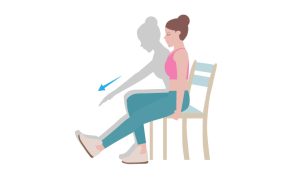Cervicogenic Headaches: Here’s All You Need To Know!
By Dr. Nikita Toshi +2 more

Get,

to manage your symptom
Get your,


4 Cr+ families
benefitted

OTP sent to 9988776655



You’ve successfully subscribed to receive
doctor-approved tips on
Whatsapp

Get ready to feel your best.

Hi There,
Download the PharmEasy App now!!


Register to Avail the Offer
Send OTPBy continuing, you agree with our Privacy Policy and Terms and Conditions

Hi There,
Sign up on PharmEasy now!!
Trusted by 4 crore+ families

OTP sent to 9988776655



You have unlocked 25% off on medicines




Code: NU25
By Dr. Nikita Toshi +2 more
Are you experiencing constant and intense headaches? Does the pain seem to be concentrated at the back of the head and the eyes? It could be a case of a cervicogenic headache. It has been observed that the number of people suffering from this kind of headache has increased exponentially after the pandemic. If you are experiencing headaches more frequently in the post-pandemic era, it is not so much a sign of coronavirus as a neck issue originating from excessive laptop use. How does that work?
Read ahead to find out.

Table of Contents

The cervical area is the uppermost part of the spine. It comprises the seven bones that form the neck. Cervicogenic headaches stem from the cervical region. The pain is felt in the head, but the epicentre of the headache is not your head. It comes from the strain on the bones, joints and muscles in the neck.
Over time, people who are engaged in jobs that require their necks to be bent in a certain way may suffer from cervicogenic headaches. Usually, truck drivers, carpenters and barbers experience it. Incorrect posture is the main cause.
But these days, this kind of headache is becoming very prevalent among laptop users and this has been particularly on the rise since people switched to a digital mode of life in 2020.
If you have a cervicogenic headache that keeps coming back and doesn’t get better with medicine, it’s important to visit a doctor. Don’t worry, with the right treatment like medicine, home remedies, alternative therapies, and may be surgery if required, you can reduce the pain and get back to your normal active life.
Dr. Arpit Verma, MBBS, MD (Pharmacology)

Covid-19 changed the way we approached life and everything became digital. Working from home, online school and tuition and watching a lot of digital content increased our screen time tenfold and this also meant that our necks were constantly bent over a device.
If we compare working at home with working in a proper office environment, there is a huge difference. At work, we have ergonomically designed workstations that align the neck with the computer screen and various apparatuses like the mouse and keyboard, which reduce the load being put on the neck.
During the pandemic, people had to make do with the facilities available at home. This chiefly includes working at regular household tables, dinner tables or hastily purchased laptop tables that are set up on our beds. However, most of the time, we end up sitting in the wrong posture for a long duration. Reports suggest that stress starts to build up after 30 minutes or so and any usage beyond 30 minutes creates pressure on the entire region, paving the way for cervicogenic headaches. As we all know, people have worked 9 hours or more in this posture all week for months. Hence it was inevitable that cervical problems cropped up.
A common accompanied condition with cervicogenic headache is Low back pain which results from a slouched back incorrect ergonomic posture and prolonged sitting without taking breaks, which leads to strain on the spine and on the ligaments of the back, resulting in recurrent episodes of neck and back pain.
Dr. Ashish Bajaj, M.B.B.S., M.D. in Clinical Pharmacology and Toxicology

Cervicogenic headaches might seem like a migraine at the offset, but symptoms that are specific to this type of headache are:
Cervicogenic headaches are secondary headaches. Secondary headaches result from an underlying condition, such as neck injuries, infections, or severe high blood pressure.
Dr. M.G. Kartheeka, MBBS, MD(Pediatrics)

Spine specialists and surgeons have reported a 70% increase in the number of cervicogenic headache cases in the recent past. Post COVID-19, cervicogenic headaches have been affecting many people below the age of 25. These people have relied heavily on their digital devices for school, work and entertainment, spending several hours on mobile phones, tablets and laptops.

Sometimes, we have no option but to work in certain conditions that can trigger cervicogenic headaches. It is unwise to ignore the pain or pop painkillers whenever you feel a headache building. The good news is there are many ways you can improve your posture and position to help ease the pressure building up in the neck area.

Headaches can be due to migraine, neurological problems, refractory errors, high blood pressure etc. It is important to consult a doctor for the diagnosis and treatment. There are some modes of treatment and medication available that relieve the pain caused by cervicogenic headaches. These include:
If left untreated, cervicogenic headaches are quite uncomfortable. Also, if not diagnosed correctly, they become worse, as steps are taken to cure them and posture improvement is not followed. Post the pandemic, care has to be taken to manage screen time effectively in order to avoid excessive straining of the neck and base of the skull. Cervicogenic headaches can easily be avoided with proper care and caution.
Disclaimer: The information provided here is for educational/awareness purposes only and is not intended to be a substitute for medical treatment by a healthcare professional and should not be relied upon to diagnose or treat any medical condition. The reader should consult a registered medical practitioner to determine the appropriateness of the information and before consuming any medication. PharmEasy does not provide any guarantee or warranty (express or implied) regarding the accuracy, adequacy, completeness, legality, reliability or usefulness of the information; and disclaims any liability arising thereof.
Links and product recommendations in the information provided here are advertisements of third-party products available on the website. PharmEasy does not make any representation on the accuracy or suitability of such products/services. Advertisements do not influence the editorial decisions or content. The information in this blog is subject to change without notice. The authors and administrators reserve the right to modify, add, or remove content without notification. It is your responsibility to review this disclaimer regularly for any changes.

Leave your comment...
Comments